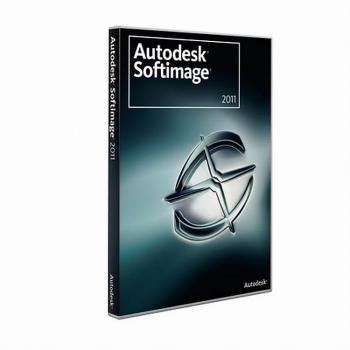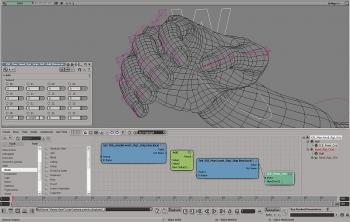Softimage used to be owned by Avid Technology, but was acquired by Autodesk in 2008 and has seen quite a few upgrades since. Autodesk is one of the leading companies in 2-D and 3-D software for entertainment, engineering, and design.
At the top of the new feature list in Softimage 2011 is the addition of automatic lip-syncing for the application’s Face Robot facial animation toolset for creating complex facial animations. Users can now upload audio tracks, and Face Robot will automatically sync the character’s lip, jaw, and tongue movements along with the audio.
The feature works with any .WAV file, and the user needs to type in the text of what the audio is saying before Face Robot can automatically generate the lip and facial animations related to speech. Users can even customize the specific animations (referred to as “visemes”) to change the facial movements for specific sounds, or edit and fine-tune any animations.
As a note, Softimage 2011 comes with a full library of lip-syncing facial animations, so most users will be fine without having to make too many changes. It automatically animates the lips, jaws, and tongue of a character, in accordance with the audio.
This is a great addition, considering that it will save quite a bit of time otherwise spent perfecting speech animations. The animations are also pretty accurate—something that may start to show in better animated characters for movies, games, and TV shows, as artists start to leverage this feature.
For those unfamiliar with Facial Robot, the toolset can quickly generate 3-D faces that can be quickly animated or used for motion-capture animations. The upgrade gives Softimage a real competitive edge over similar applications. The new lip-syncing toolset in Face Robot makes it a must-have for anyone working with facial animations.
ICE Kinematics
The benefit of using ICE while rigging is that it uses a kind of plug-and-play method by using and connecting nodes. The user can place and drag different IK Solvers onto the workspace and then connect the different nodes to create specific animations. It also uses a simple color-based approach to alert the user of what is connected and working, and what is not.
Users can also make more complex edits to the individual nodes by going into and editing the algorithms themselves, but doing so is a bit complicated.
Autodesk has teamed up with Lagoa Technologies to allow users to license Lagoa Multiphysics with Softimage. Used along with ICE, it allows users to create realistic behavior simulations of cloth, liquids, and collisions, among others.
Lagoa Multiphysics is included with the Softimage 2011 Subscription Advantage Pack, as well as with the Autodesk Entertainment Creation Suites Premium. It should be noted that the subscription pack also includes Stereoscopic 3-D support as well as a collection of other features.
Realistic Light
Autodesk did quite a bit with rendering light and shade in Softimage 2011. Aside from having more complex ways of creating and editing light sources, users can choose from hundreds of new shaders, including nearly 170 mental ray shaders and a good collection of utility shaders.
It also includes a whole new architecture for working with shaders. It’s basically just a text screen, but it works well with real-time shaders, and the user doesn’t have to build a UI code to use it. On that note, Softimage now comes installed with Python, which can be turned on and off.
There is also a new Viewport Slate—resembling a small black text box—for use with rendering. In addition, there are new texturing enhancements that give users more editing options when unfolding textures.
Of note, Autodesk has eliminated its Softimage Advanced application and has merged the features into the basic package. Basically, the application is more complete in features and goes for a better price.
There is now only Autodesk Standalone or Network licensing, the only difference being that the Network license gives five Batch licenses, and the Standalone version doesn’t enable Batch.
In a Nutshell
Softimage 2011 is still PC-only. This is a bit disappointing, as there was a big move toward supporting the Mac OS platform in the 2011 3-D rendering software releases—particularly thanks to the release of the Mac Snow Leopard operating system.
Like most 3-D rendering applications, Softimage 2011 is in no way simple, but it’s also not that difficult to learn—especially for users who have experience with similar applications.
For current users of Softimage 2010 and earlier versions, the update is well worth it—particularly due to the lip-syncing feature for Face Robot. The support for ICE kinematics and new shaders also does quite a bit.
For users of Maya 2011 or Cinema 4D, the switch to Softimage 2011 may not be necessary—unless you regularly work with facial and speech animations.
Price: Starting at $2,995
Website: http://usa.autodesk.com/








![[LIVE Q&A 04/01 at 10:30AM ET] DOGE Moves to Rectify Government, Exposes Fractured System | Live With Josh](/_next/image?url=https%3A%2F%2Fimg.theepochtimes.com%2Fassets%2Fuploads%2F2025%2F03%2F31%2Fid5834583-040125_REC-1080x720.jpg&w=1200&q=75)


